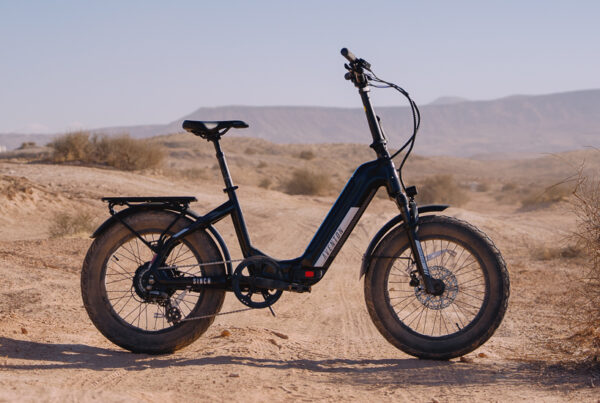We perform our Range Test for a few reasons; first, to validate or refute the claims made by an e-bike’s manufacturer. We also use this test to evaluate the efficiency of the motor and battery pairing, as well as to determine if a battery’s capacity matches the needs of the motor and the design intent of the bike.
The Troxus Explorer’s 48V, 960 Watt-hour (Wh) battery has an unusually large capacity when compared to what we’ve seen on similar models, but one that we think matches the bike’s name and design intent. Troxus designed the Explorer to handle a wide variety of environments and to take its rider far; they advertise a range of between 30-62 miles. To establish their estimates, Troxus performed their own range testing on the Explorer “using a rider weight of 180lbs on 80% flat terrain,” as stated on the bike’s webpage.
In our testing, the bike achieved a distance of 24.7 miles using maximum assistance and 72 miles in PAS 1. We were very happy to see the Explorer’s results when using the minimum amount of assistance; considering the 10-mile-per-hour speed limit in this setting, we were unsure of how practical it was going to be. In most other cases, we would have increased our test setting to PAS 2, but with the Explorer’s jump to 15 mph there, we felt that it was better to be conservative.
In my experience, the Explorer still feels quite a bit like a non-electric bicycle in PAS 1, despite the benefit of its motor’s assistance. This setting takes the weight of the bike away and helps significantly on hills, so I do think it’s a practical setting for riders who still want to feel like they’re contributing to the experience. For this reason, I’m glad that we kept the bike in its lowest setting.
The Explorer’s result in PAS 5 is somewhat less exciting when compared to those of similar e-bikes, but it does match closely with Troxus’ claims. If we go by the math, a 960Wh battery should be able to power a 750W motor for roughly an hour and 15 minutes in this setting. We had slightly less time on the bike, but we don’t feel the difference is great enough to be concerned with; overall, the Explorer’s advertised range seems accurate.
As it is, the 25 miles we measured in PAS 5 should likely cover most adventures or commutes when traveling at its top speed of 28 miles per hour. As our Circuit Test results showed, the Troxus Explorer is also quite capable in its lower PAS settings – so if you need to travel farther, using the bike at lower speeds will provide extended range.
Source link








